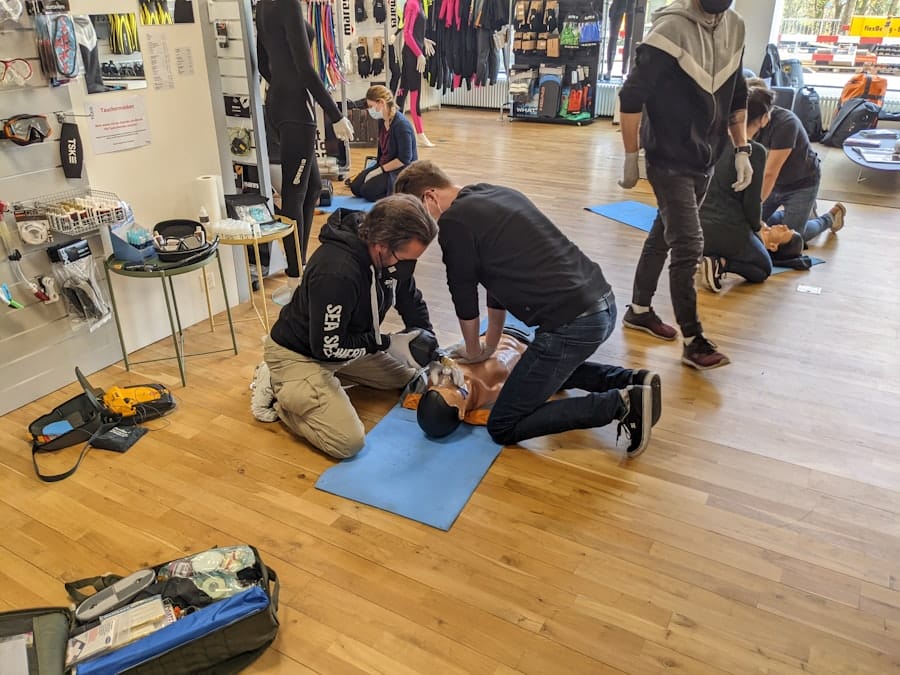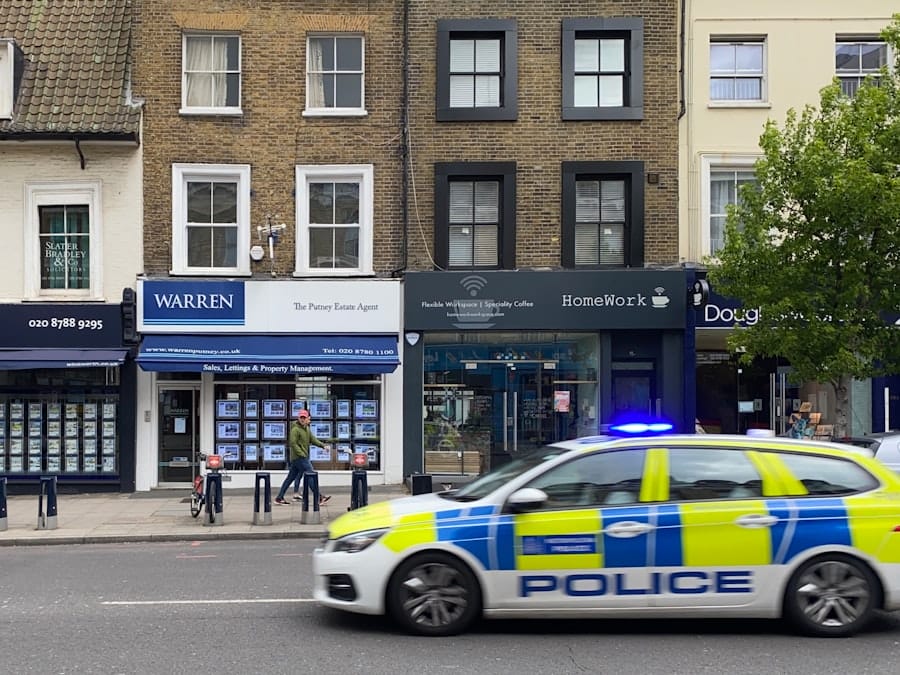Emergency Response and Disaster Management Plans (ERDMPs) are essential components of organizational risk management strategies. These plans are designed to protect employees, customers, and communities during emergencies or disasters. ERDMPs provide a structured approach for responding to various emergencies, including natural disasters, fires, chemical spills, and medical crises.
Implementing a comprehensive ERDMP helps organizations minimize the impact of emergencies, safeguard lives and property, and maintain operational continuity. ERDMPs also play a crucial role in ensuring compliance with legal and regulatory requirements. Many jurisdictions mandate that businesses maintain emergency response plans to protect employee and public safety.
Non-compliance with these regulations can lead to financial penalties, legal consequences, and reputational damage. As such, developing and implementing a robust ERDMP is both a safety imperative and a legal obligation for many organizations.
Key Takeaways
- Understanding the Importance of ERDMP:
- ERDMP is crucial for effective emergency response and preparedness.
- It helps in identifying potential risks and developing strategies to mitigate them.
- Developing a Comprehensive Emergency Response Plan:
- A well-thought-out plan should include clear roles and responsibilities for all stakeholders.
- It should address various types of emergencies and provide specific response protocols.
- Implementing Effective Communication Strategies:
- Clear and timely communication is essential during emergencies.
- Utilizing multiple communication channels and establishing a chain of command is important.
- Conducting Regular Training and Drills:
- Regular training and drills help in ensuring that all stakeholders are familiar with the emergency response plan.
- It allows for identifying areas of improvement and refining response strategies.
- Establishing Strong Partnerships and Collaborations:
- Collaborating with local authorities, emergency services, and community organizations enhances the effectiveness of emergency response.
- Building strong partnerships can lead to better resource allocation and coordination during emergencies.
- Utilizing Technology for Efficient Emergency Response:
- Technology can be used for real-time communication, tracking resources, and monitoring the situation during emergencies.
- Utilizing tools such as emergency notification systems and GIS mapping can enhance response efficiency.
- Evaluating and Updating ERDMP Regularly:
- Regular evaluation helps in identifying gaps and areas for improvement in the emergency response plan.
- Updating the plan based on lessons learned and changing risk factors is essential for maintaining its effectiveness.
Developing a Comprehensive Emergency Response Plan
Risk Assessment and Identification
The first step in developing an emergency response plan is to conduct a thorough risk assessment to identify potential hazards and vulnerabilities. This may include conducting a site survey, reviewing historical data on past emergencies, and consulting with experts in emergency management.
Developing the Response Plan
Once the risks and hazards have been identified, the next step is to develop a response plan that outlines the specific actions to be taken in the event of an emergency. This may include establishing evacuation procedures, designating emergency assembly points, creating communication protocols, and identifying key personnel responsible for implementing the plan. It is important to involve stakeholders from across the organization in the development of the emergency response plan to ensure that all perspectives and expertise are taken into account.
Implementation and Review
In addition to developing the response plan, it is also important to establish protocols for training, drills, and exercises to ensure that employees are familiar with their roles and responsibilities in an emergency. Regular review and updating of the emergency response plan are also essential to ensure that it remains relevant and effective in light of changing risks and organizational dynamics.
Implementing Effective Communication Strategies

Effective communication is a critical component of any emergency response plan. During an emergency, clear and timely communication can mean the difference between life and death. Therefore, it is essential to establish communication protocols that ensure that accurate information is disseminated quickly to all relevant parties.
One key aspect of effective communication in emergency response is establishing multiple channels for communication. This may include using a combination of verbal, written, and electronic communication methods to ensure that information reaches all stakeholders. It is also important to establish a chain of command for communication, so that everyone knows who is responsible for making decisions and disseminating information during an emergency.
Another important aspect of effective communication in emergency response is ensuring that all employees are trained in how to use communication equipment and systems. This may include providing training on how to use two-way radios, emergency notification systems, and other communication tools. In addition, it is important to establish protocols for communicating with external stakeholders, such as emergency services, government agencies, and the media.
Conducting Regular Training and Drills
| Training and Drills | Frequency | Participants | Duration |
|---|---|---|---|
| Fire Safety Drills | Monthly | All employees | 30 minutes |
| Emergency Response Training | Quarterly | Emergency Response Team | 1 hour |
| First Aid Training | Bi-annually | All employees | 2 hours |
Regular training and drills are essential for ensuring that employees are prepared to respond effectively in an emergency. Training should cover a range of topics, including evacuation procedures, first aid, fire safety, and the use of emergency equipment. It is important to provide training not only to designated emergency response teams but also to all employees, as everyone has a role to play in ensuring the safety and well-being of themselves and others.
In addition to training, conducting regular drills and exercises is essential for testing the effectiveness of the ERDMP and identifying areas for improvement. This may include simulating various emergency scenarios, such as fires, chemical spills, or medical emergencies, and evaluating the response of employees. By conducting regular drills, organizations can identify gaps in their emergency response capabilities and take corrective action to address them.
Furthermore, regular training and drills can help build confidence and competence among employees, ensuring that they are able to respond effectively in a real emergency. It also provides an opportunity for employees to familiarize themselves with emergency procedures and protocols, reducing the likelihood of panic or confusion during an actual emergency.
Establishing Strong Partnerships and Collaborations
In many cases, effective emergency response requires collaboration with external partners, such as emergency services, government agencies, and community organizations. Therefore, it is important for organizations to establish strong partnerships and collaborations with these stakeholders to ensure a coordinated and effective response to emergencies. One way to establish strong partnerships is by participating in local emergency planning committees or working groups.
These forums provide an opportunity for organizations to collaborate with other stakeholders in developing emergency response plans, sharing resources, and coordinating response efforts. By participating in these forums, organizations can gain valuable insights into local emergency management practices and build relationships with key partners. Another important aspect of establishing strong partnerships is developing mutual aid agreements with other organizations.
These agreements outline how organizations will support each other during emergencies by sharing resources, personnel, or expertise. By establishing mutual aid agreements, organizations can enhance their emergency response capabilities and ensure that they have access to additional support when needed.
Utilizing Technology for Efficient Emergency Response

Emergency Notification Systems
Emergency notification systems are a key technology in emergency response, allowing organizations to quickly disseminate critical information to employees and stakeholders during an emergency. These systems can send alerts via text message, email, or phone call, ensuring that everyone receives timely information about the situation and any necessary actions they need to take.
Geographic Information Systems (GIS)
GIS technology is another essential tool in emergency response, providing valuable information for decision-making during an emergency. By utilizing GIS technology, organizations can map out potential hazards, evacuation routes, and emergency resources, better understanding the geographic context of an emergency and making more informed decisions about how to respond.
Mobile Applications
Mobile applications can also enhance emergency response efforts by providing employees with access to important information and resources on their smartphones or tablets. Organizations can develop mobile apps that provide real-time updates on emergency situations, access to emergency procedures and protocols, and tools for reporting incidents or requesting assistance.
Evaluating and Updating ERDMP Regularly
Finally, it is essential for organizations to regularly evaluate and update their ERDMP to ensure that it remains effective in light of changing risks and organizational dynamics. This may include conducting regular reviews of the plan with key stakeholders to identify areas for improvement and taking corrective action as needed. In addition to regular reviews, it is important for organizations to update their ERDMP in response to changes in their operations or external factors that may impact their risk profile.
For example, if an organization expands its facilities or introduces new processes that pose additional risks, the ERDMP should be updated accordingly. Furthermore, it is important for organizations to conduct post-incident reviews following any significant emergency or disaster. These reviews provide an opportunity to evaluate the effectiveness of the ERDMP in a real-world scenario, identify any shortcomings or areas for improvement, and take corrective action as needed.
By regularly evaluating and updating their ERDMP, organizations can ensure that they are prepared to respond effectively to emergencies and disasters while minimizing the impact on their operations and stakeholders. This ongoing process of improvement is essential for maintaining a robust and resilient emergency response capability.
One related article to Emergency Response & Disaster Management Planning (ERDMP) is the Water Quantification Resource Study. This article discusses the importance of accurately quantifying water resources for effective disaster management planning, as water is a critical resource during emergency response situations. Understanding the availability and distribution of water can help authorities better prepare for and respond to disasters such as floods, droughts, and other water-related emergencies.
FAQs
What is Emergency Response & Disaster Management Planning (ERDMP)?
Emergency Response & Disaster Management Planning (ERDMP) is a systematic approach to preparing for, responding to, and recovering from emergencies and disasters. It involves creating plans, protocols, and procedures to ensure effective and coordinated response to various types of emergencies and disasters.
Why is Emergency Response & Disaster Management Planning (ERDMP) important?
ERDMP is important because it helps organizations, communities, and governments to be better prepared for emergencies and disasters. It ensures that there are clear guidelines and procedures in place to respond to different types of crises, which can ultimately save lives and minimize damage.
What are the key components of Emergency Response & Disaster Management Planning (ERDMP)?
The key components of ERDMP include risk assessment, emergency response plans, communication protocols, training and drills, resource management, coordination with external agencies, and post-disaster recovery plans.
Who is responsible for Emergency Response & Disaster Management Planning (ERDMP)?
Responsibility for ERDMP typically falls on a range of stakeholders, including government agencies, emergency services, businesses, non-profit organizations, and community groups. In some cases, there may be designated emergency management teams or officers within organizations or communities.
What are some common types of emergencies and disasters that ERDMP plans address?
ERDMP plans can address a wide range of emergencies and disasters, including natural disasters such as earthquakes, hurricanes, and floods, as well as human-made disasters like industrial accidents, terrorist attacks, and public health emergencies.

